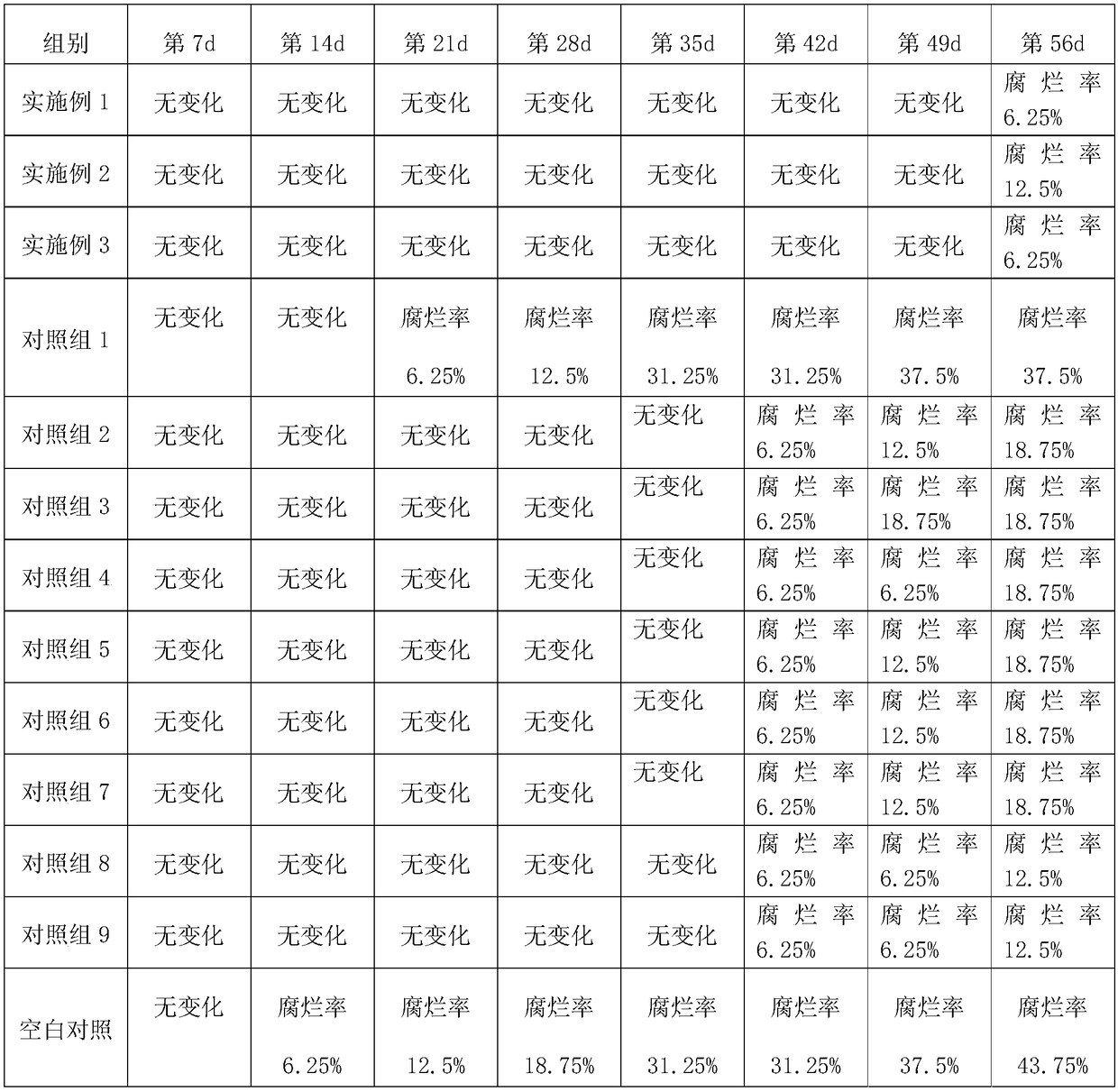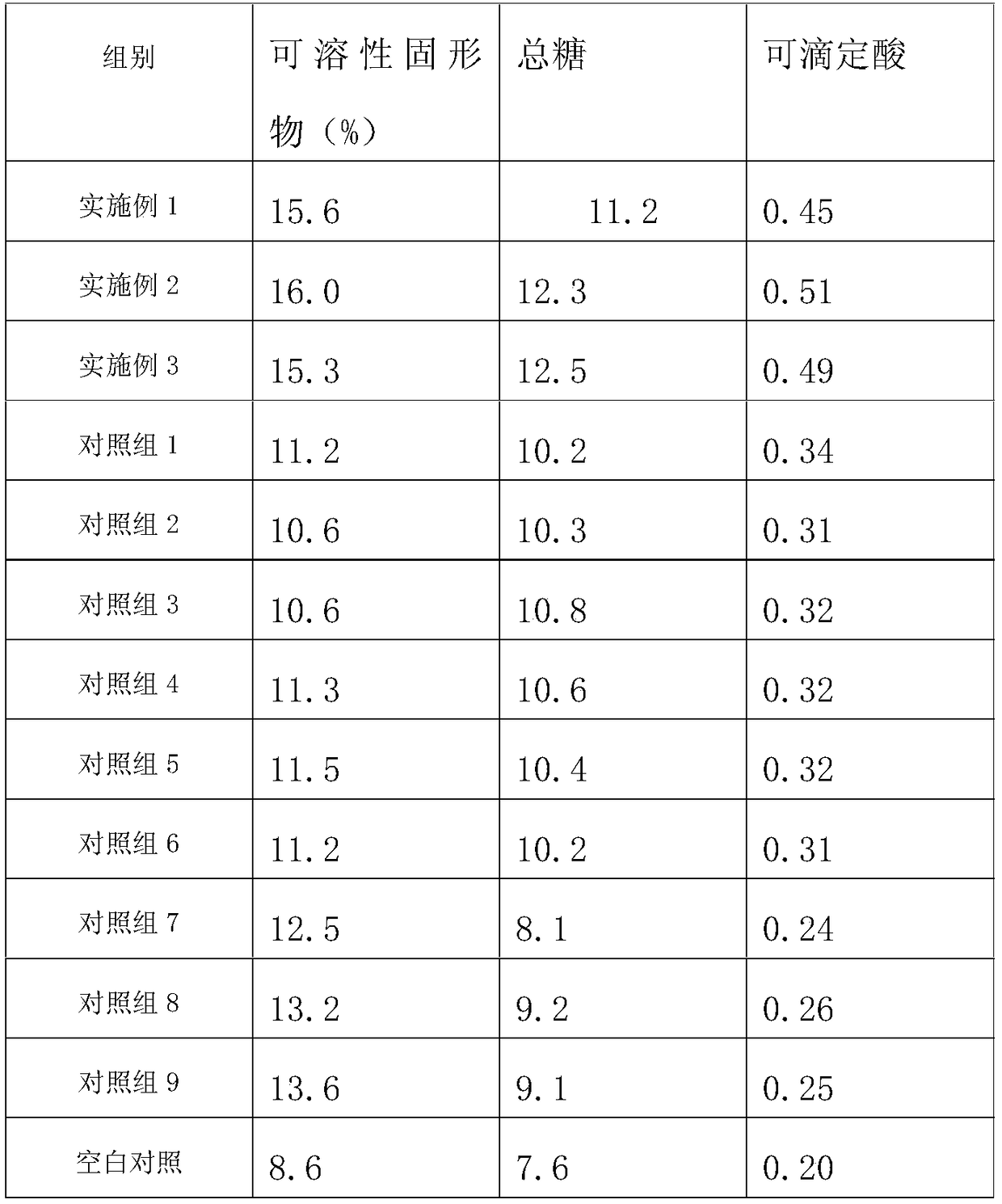Storage method of postharvest mandarin orange
A post-harvest technology for tangerines, which is applied in the storage field of post-harvest citrus, which can solve problems such as quality decline, difficulty in long-term storage, drug safety and drug residue disputes
- Summary
- Abstract
- Description
- Claims
- Application Information
AI Technical Summary
Problems solved by technology
Method used
Image
Examples
Embodiment 1
[0035] A storage method for post-harvest mandarin oranges, comprising the following specific steps:
[0036] (1) Fruit picking: The picked fruits should be placed under the sunshade net in time, and the thickness of the tangerine fruits should not be more than 10 cm;
[0037] (2) Loading and unloading: the harvested citrus fruits are lightly loaded into the plastic turnover basket, and the plastic turnover basket is loaded into the transport vehicle and transported to the factory;
[0038](3) Sampling inspection: unload the plastic turnover basket from the transport vehicle, and then select the tangerine fruits, and remove the rotten fruits, pest-damaged fruits, wind-damaged fruits, and bruised fruits;
[0039] (4) Chlorosis:
[0040] (1 storage chlorosis treatment: put the citrus whose pulp is mature and whose peel is still green into the chlorosis storehouse and add ethylene to carry out chlorosis treatment, control the temperature of the chlorosis storehouse to be ± 25 ℃, ...
Embodiment 2
[0056] A storage method for post-harvest mandarin oranges, comprising the following specific steps:
[0057] (1) Fruit picking: The picked fruits should be placed under the sunshade net in time, and the thickness of the tangerine fruits should not be more than 10 cm;
[0058] (2) Loading and unloading: the harvested citrus fruits are lightly loaded into the plastic turnover basket, and the plastic turnover basket is loaded into the transport vehicle and transported to the factory;
[0059] (3) Sampling inspection: unload the plastic turnover basket from the transport vehicle, and then select the tangerine fruits, and remove the rotten fruits, pest-damaged fruits, wind-damaged fruits, and bruised fruits;
[0060] (4) Chlorosis:
[0061] (1 storage chlorosis treatment: put the citrus whose pulp is mature and whose peel is still green into the chlorosis storehouse and add ethylene to carry out chlorosis treatment, control the temperature of the chlorosis storehouse to be ± 25 ℃,...
Embodiment 3
[0077] A storage method for post-harvest mandarin oranges, comprising the following specific steps:
[0078] (1) Fruit picking: The picked fruits should be placed under the sunshade net in time, and the thickness of the tangerine fruits should not be more than 10 cm;
[0079] (2) Loading and unloading: the harvested citrus fruits are lightly loaded into the plastic turnover basket, and the plastic turnover basket is loaded into the transport vehicle and transported to the factory;
[0080] (3) Sampling inspection: unload the plastic turnover basket from the transport vehicle, and then select the tangerine fruits, and remove the rotten fruits, pest-damaged fruits, wind-damaged fruits, and bruised fruits;
[0081] (4) Chlorosis:
[0082] (1 storage chlorosis treatment: put the citrus whose pulp is mature and whose peel is still green into the chlorosis storehouse and add ethylene to carry out chlorosis treatment, control the temperature of the chlorosis storehouse to be ± 25 ℃,...
PUM
| Property | Measurement | Unit |
|---|---|---|
| Particle size | aaaaa | aaaaa |
| Particle size | aaaaa | aaaaa |
Abstract
Description
Claims
Application Information
 Login to View More
Login to View More - R&D
- Intellectual Property
- Life Sciences
- Materials
- Tech Scout
- Unparalleled Data Quality
- Higher Quality Content
- 60% Fewer Hallucinations
Browse by: Latest US Patents, China's latest patents, Technical Efficacy Thesaurus, Application Domain, Technology Topic, Popular Technical Reports.
© 2025 PatSnap. All rights reserved.Legal|Privacy policy|Modern Slavery Act Transparency Statement|Sitemap|About US| Contact US: help@patsnap.com


